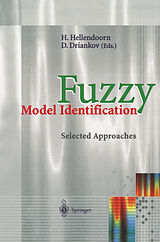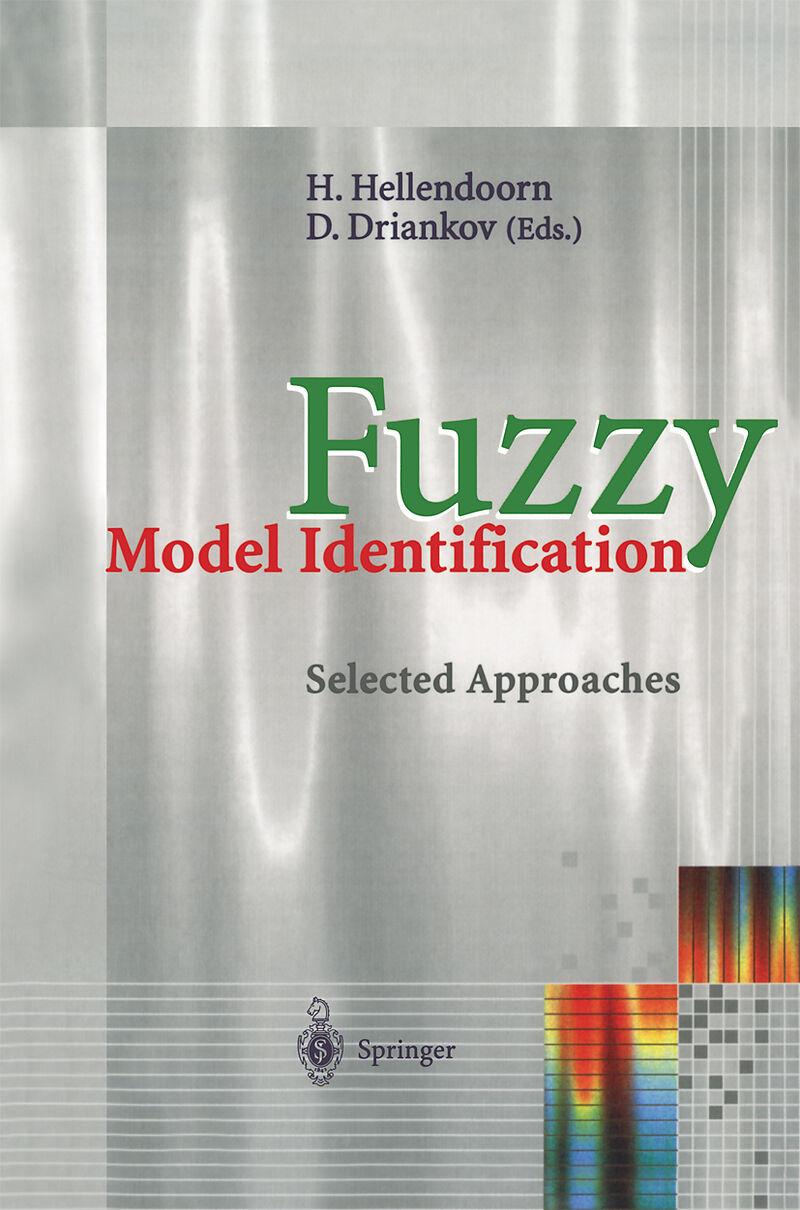Fuzzy Model Identification
Einband:
E-Book (pdf)
EAN:
9783642607677
Untertitel:
Selected Approaches
Genre:
IT & Internet
Herausgeber:
Springer Berlin Heidelberg
Anzahl Seiten:
319
Erscheinungsdatum:
06.12.2012
This carefully edited volume presents a collection of recent works in fuzzy model identification. It opens the field of fuzzy identification to conventional control theorists as a complement to existing approaches, provides practicing control engineers with the algorithmic and practical aspects of a set of new identification techniques, and emphasizes opportunities for a more systematic and coherent theory of fuzzy identification by bringing together methods based on different techniques but aiming at the identification of the same types of fuzzy models.
In control engineering, mathematical models are often constructed, for example based on differential or difference equations or derived from physical laws without using system data (white-box models) or using data but no insight (black-box models). In this volume the authors choose a combination of these models from types of structures that are known to be flexible and successful in applications. They consider Mamdani, Takagi-Sugeno, and singleton models, employing such identification methods as clustering, neural networks, genetic algorithms, and classical learning.
All authors use the same notation and terminology, and each describes the model to be identified and the identification technique with algorithms that will help the reader to apply the presented methods in his or her own environment to solve real-world problems. Furthermore, each author gives a practical example to show how the presented method works, and deals with the issues of prior knowledge, model complexity, robustness of the identification method, and real-world applications.
Klappentext
During the past few years two principally different approaches to the design of fuzzy controllers have emerged: heuristics-based design and model-based design. The main motivation for the heuristics-based design is given by the fact that many industrial processes are still controlled in one of the following two ways: - The process is controlled manually by an experienced operator. - The process is controlled by an automatic control system which needs manual, on-line 'trimming' of its parameters by an experienced operator. In both cases it is enough to translate in terms of a set of fuzzy if-then rules the operator's manual control algorithm or manual on-line 'trimming' strategy in order to obtain an equally good, or even better, wholly automatic fuzzy control system. This implies that the design of a fuzzy controller can only be done after a manual control algorithm or trimming strategy exists. It is admitted in the literature on fuzzy control that the heuristics-based approach to the design of fuzzy controllers is very difficult to apply to multiple-inputjmultiple-output control problems which represent the largest part of challenging industrial process control applications. Furthermore, the heuristics-based design lacks systematic and formally verifiable tuning tech niques. Also, studies of the stability, performance, and robustness of a closed loop system incorporating a heuristics-based fuzzy controller can only be done via extensive simulations.
Inhalt
General Overview.- Fuzzy Identification from a Grey Box Modeling Point of View.- 1. Introduction.- 2. System Identification.- 3. Fuzzy Modeling Framework.- 4. Fuzzy Identification Based on Prior Knowledge.- 5. Example - Tank Level Modeling.- 6. Practical Aspects.- 7. Conclusions and Future Work.- References.- Clustering Methods.- Constructing Fuzzy Models by Product Space Clustering.- 1. Introduction.- 2. Overview of Fuzzy Models.- 3. Structure Selection for Modeling of Dynamic Systems.- 4. Fuzzy Clustering.- 5. Deriving Takagi-Sugeno Fuzzy Models.- 6. Example: pH Neutralization.- 7. Practical Considerations and Concluding Remarks.- A. The Gustafson-Kessel Algorithm - MATLAB Implementation.- References.- Identification of Takagi-Sugeno Fuzzy Models via Clustering and Hough Transform.- 1. Introduction.- 2. The Identification Method.- 3. Example 1.- 4. Example 2.- 5. Summary of the Identification Procedure.- 6. Practical Considerations and Concluding Remarks.- References.- Rapid Prototyping of Fuzzy Models Based on Hierarchical Clustering.- 1. Introduction.- 2. The Fuzzy C-Means Algorithm.- 3. Using Hierarchical Clustering to Preprocess Data.- 4. Rapid Prototyping of Approximative Fuzzy Models.- 5. Rapid Prototyping of Descriptive Fuzzy Models.- 6. Examples.- 7. Practical Considerations and Concluding Remarks.- A. Proofs of Propositions.- References.- Neural Networks.- Fuzzy Identification Using Methods of Intelligent Data Analysis.- 1. Introduction.- 2. Neuro-Fuzzy Methods.- 3. Density Estimation.- 4. Fuzzy Clustering.- 5. Conclusion.- A. From Rules to Networks.- B. Learning Rule for RBF Networks.- C.Update Equations for Gaussian Mixtures.- D. Adaptation Algorithm for Fuzzy Clustering.- References.- Identification of Singleton Fuzzy Models via Fuzzy Hyperrectangular Composite NN.- 1. Introduction.- 2. Classification of Fuzzy Models.- 3. Fuzzy Neural Networks.- 4. Identification of Singleton Fuzzy Models.- 5. Simulation Results.- 6. Practical Considerations and Concluding Remarks.- References.- Genetic Algorithms.- Identification of Linguistic Fuzzy Models by Means of Genetic Algorithms.- 1. Introduction.- 2. Evolutionary Algorithms and Genetic Fuzzy Systems.- 3. The Fuzzy Model Identification Problem.- 4. The Genetic Fuzzy Identification Method.- 5. Example.- 6. Practical Considerations and Concluding Remarks.- References.- Optimization of Fuzzy Models by Global Numeric Optimization.- 1. Introduction.- 2. Theoretical Aspects of Fuzzy Models.- 3. The Fuzzy Identification Method.- 4. Simulation Results.- 5. Practical Aspects.- References.- Artificial Intelligence.- Identification of Linguistic Fuzzy Models Based on Learning.- 1. Introduction.- 2. Basic Concepts and Notation.- 3. The Identification Problem.- 4. The Fuzzy Identification Method.- 5. Numeric Examples.- 6. Practical Aspects and Concluding Remarks.- References.

Leider konnten wir für diesen Artikel keine Preise ermitteln ...
billigbuch.ch sucht jetzt für Sie die besten Angebote ...
Die aktuellen Verkaufspreise von 6 Onlineshops werden in Realtime abgefragt.
Sie können das gewünschte Produkt anschliessend direkt beim Anbieter Ihrer Wahl bestellen.
Loading...
Die aktuellen Verkaufspreise von 6 Onlineshops werden in Realtime abgefragt.
Sie können das gewünschte Produkt anschliessend direkt beim Anbieter Ihrer Wahl bestellen.
| # | Onlineshop | Preis CHF | Versand CHF | Total CHF | ||
|---|---|---|---|---|---|---|
| 1 | Seller | 0.00 | 0.00 | 0.00 |
